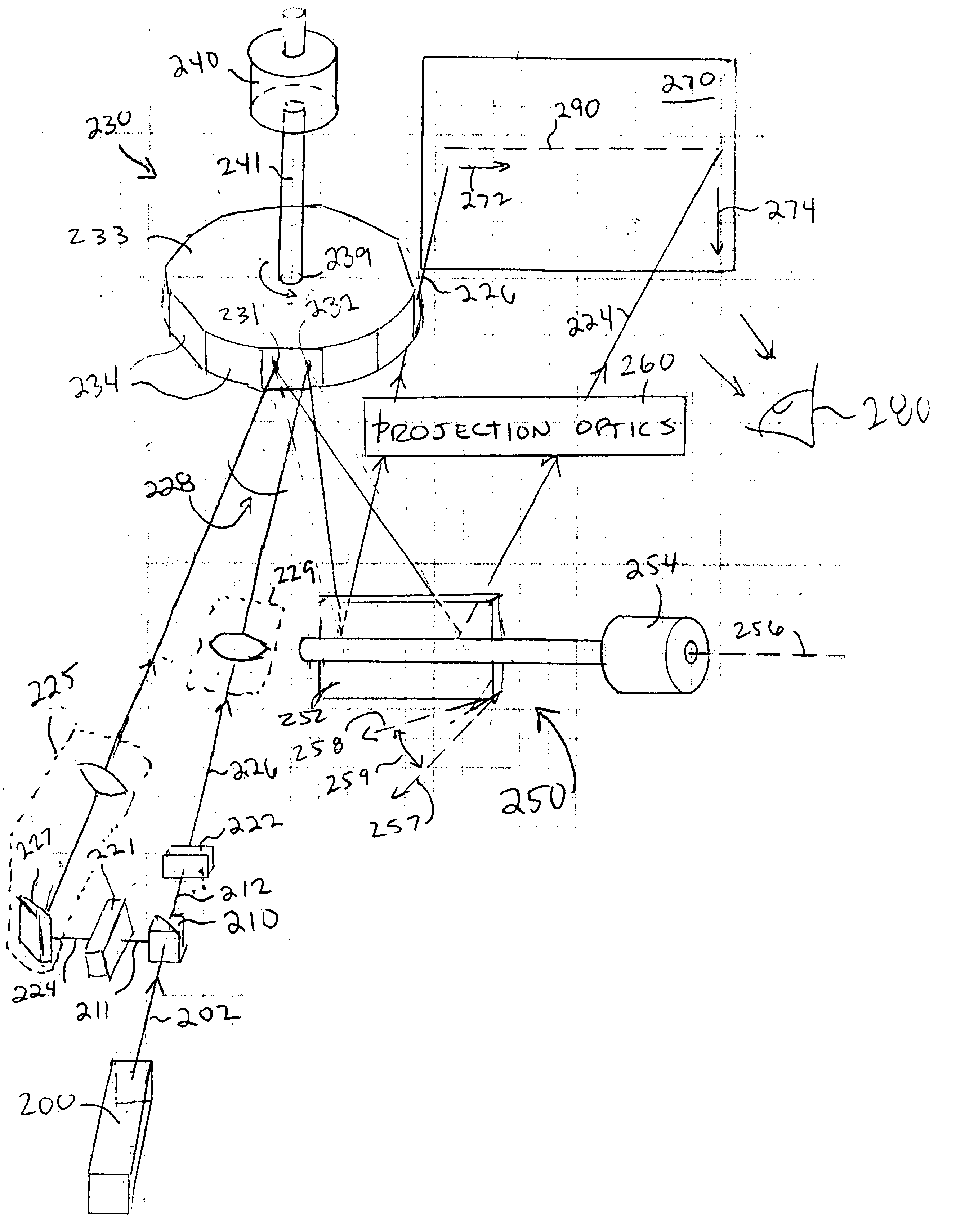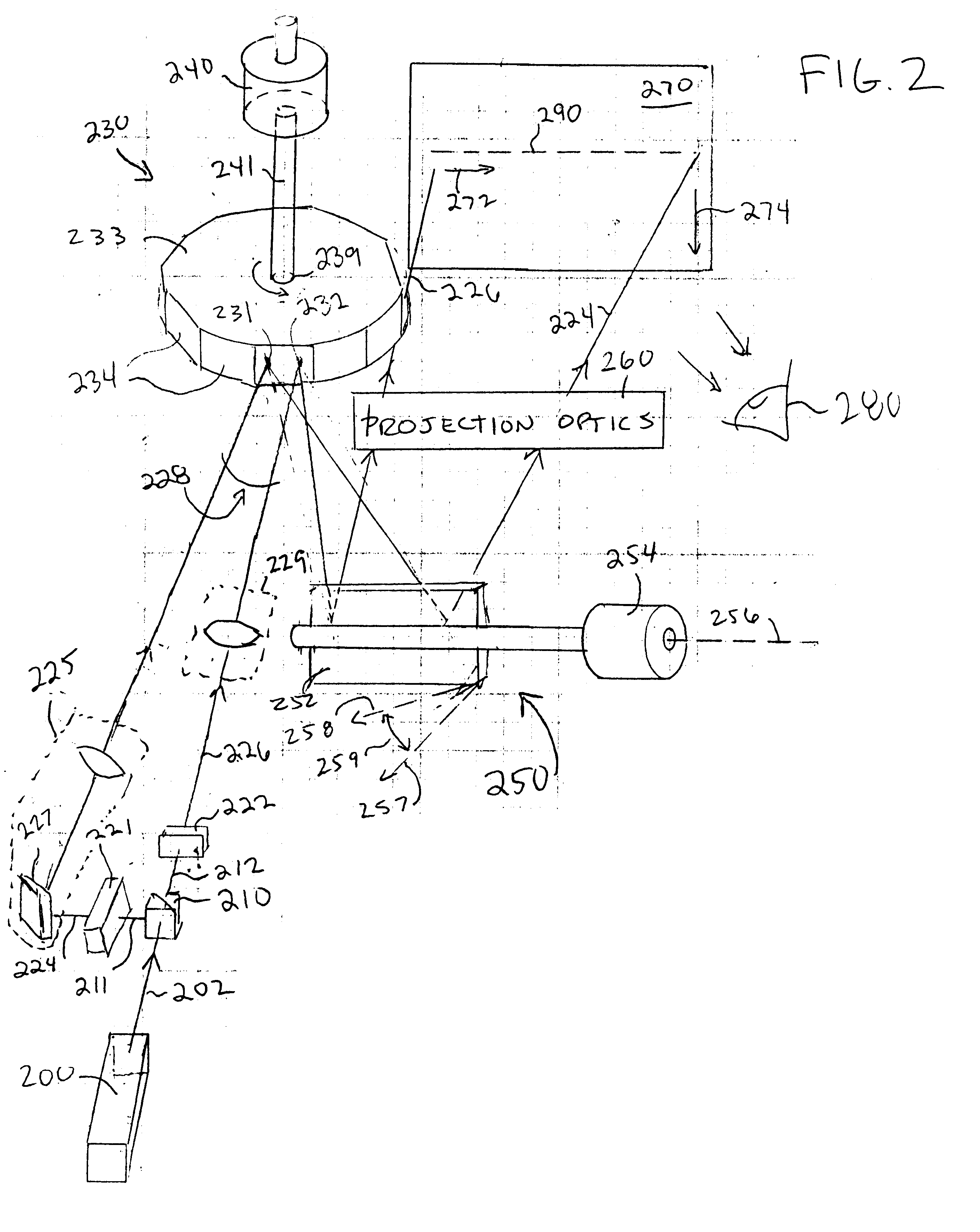Laser imaging system with progressive multi-beam scan architecture
a multi-beam scan and scanning technology, applied in the direction of color television details, instrumentation, picture signal generators, etc., can solve the problems of widespread application of high-resolution video projectors, lack of suitable display systems, and severely limited video images seen by viewers
- Summary
- Abstract
- Description
- Claims
- Application Information
AI Technical Summary
Benefits of technology
Problems solved by technology
Method used
Image
Examples
Embodiment Construction
of a High Resolution Display
The invention described herein can be implemented in many different configurations. One particular example is a 2000.times.1000 pixel display in which each pixel must be refreshed at a 60 Hz rate. During the course of each frame, 1000 sequential lines are written progressively, each line being modulated to generate 2000 resolvable pixels. Neglecting the need for flyback and retrace intervals for the purpose of illustration, this rate of line initiation requires that a new line be commenced every 16.7 microseconds. It is of note that such a system requires a video bandwidth approximately twice that of interlaced HDTV (1920.times.1080).
For purposes of comparison, using a single-beam to generate 2000 pixels within a 16.7 microsecond time interval theoretically requires a modulation bandwidth of 120 MHz. However, when a polygon mirror / galvanometer is used to generate the horizontal / vertical scan format, the practical limitations imposed both upon polygon scan...
PUM
 Login to View More
Login to View More Abstract
Description
Claims
Application Information
 Login to View More
Login to View More - R&D
- Intellectual Property
- Life Sciences
- Materials
- Tech Scout
- Unparalleled Data Quality
- Higher Quality Content
- 60% Fewer Hallucinations
Browse by: Latest US Patents, China's latest patents, Technical Efficacy Thesaurus, Application Domain, Technology Topic, Popular Technical Reports.
© 2025 PatSnap. All rights reserved.Legal|Privacy policy|Modern Slavery Act Transparency Statement|Sitemap|About US| Contact US: help@patsnap.com



